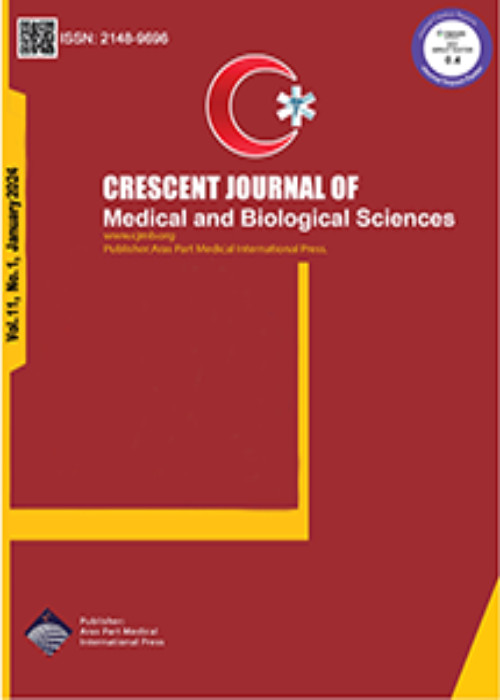Comparison of Azithromycin and Pyrimethamine/Sulfadiazine Treatment in Ocular Toxoplasmosis in North West of Iran
Author(s):
Abstract:
Objective
Ocular toxoplasmosis (OT), characterized by necrotizing retinochoroiditis, scar formation and decreased vision, is recognized as the most prevalent cause of posterior uveitis in Iran. Although pyrimethamine/sulfadiazine combination remains the standard treatment particularly for patients with sight-threatening lesions, intolerance, inaccessibility and adverse drug reactions to this regimen have imposed us to seek for alternative treatments.Materials And Methods
In this prospective randomized control clinical trial study, 72 patients with active, non-vision threatening toxoplasmic chorioretinitis were randomly divided into 2 treatment regimen: 36 patients treated with standard protocol with pyrimethamine/sulfadiazine, and 36 patients received azithromycin for 6 weeks. All patients were followed up for 24 months. The clinical outcomes measured before and after intervention were, time to disease inactivity (lesion borders sharpening and scarring), changes in the size of retinochoroidal lesion, rate of recurrence, adverse drug reactions and visual acuity (VA).Results
No significant difference was noted between the 2 groups regarding age, gender, and VA before treatment. Significant improvement was noted in VA for each group during treatment. VA increased by 0.39 logMAR units in group 1 (P = 0.00) and 0.35 logMAR units in group 2 (P = 0.00). There was no statistically significant difference between the 2 groups concerning visual improvement (P = 0.33) and reduction in retinal lesion size and activity. There were totally 22 cases who experienced recurrences during the follow up period (4 [11.1%] patients of control group and 18 [50%] of intervention group [P = 0.00]), indicating significant lower recurrence in control group. Treatment tolerance was significantly better for the azithromycin group due to lower adverse drug reactions (P = 0.00).Conclusion
Azithromycin at a dose of 250 mg/d was shown to be effective for the treatment of active, non-vision threatening toxoplasmic retinochoroiditis similar to classic treatment with Pyrimethamine/Sulfadiazine regimen. However, recurrences and adverse drug reactions seem to differ significantly which notes the need for further studies and also vigilant selection of treatment protocols.Keywords:
Language:
English
Published:
Crescent Journal of Medical and Biological Sciences, Volume:4 Issue: 2, Apr 2017
Pages:
80 to 84
magiran.com/p1661484
دانلود و مطالعه متن این مقاله با یکی از روشهای زیر امکان پذیر است:
اشتراک شخصی
با عضویت و پرداخت آنلاین حق اشتراک یکساله به مبلغ 1,390,000ريال میتوانید 70 عنوان مطلب دانلود کنید!
اشتراک سازمانی
به کتابخانه دانشگاه یا محل کار خود پیشنهاد کنید تا اشتراک سازمانی این پایگاه را برای دسترسی نامحدود همه کاربران به متن مطالب تهیه نمایند!
توجه!
- حق عضویت دریافتی صرف حمایت از نشریات عضو و نگهداری، تکمیل و توسعه مگیران میشود.
- پرداخت حق اشتراک و دانلود مقالات اجازه بازنشر آن در سایر رسانههای چاپی و دیجیتال را به کاربر نمیدهد.
دسترسی سراسری کاربران دانشگاه پیام نور!
اعضای هیئت علمی و دانشجویان دانشگاه پیام نور در سراسر کشور، در صورت ثبت نام با ایمیل دانشگاهی، تا پایان فروردین ماه 1403 به مقالات سایت دسترسی خواهند داشت!
In order to view content subscription is required
Personal subscription
Subscribe magiran.com for 70 € euros via PayPal and download 70 articles during a year.
Organization subscription
Please contact us to subscribe your university or library for unlimited access!


